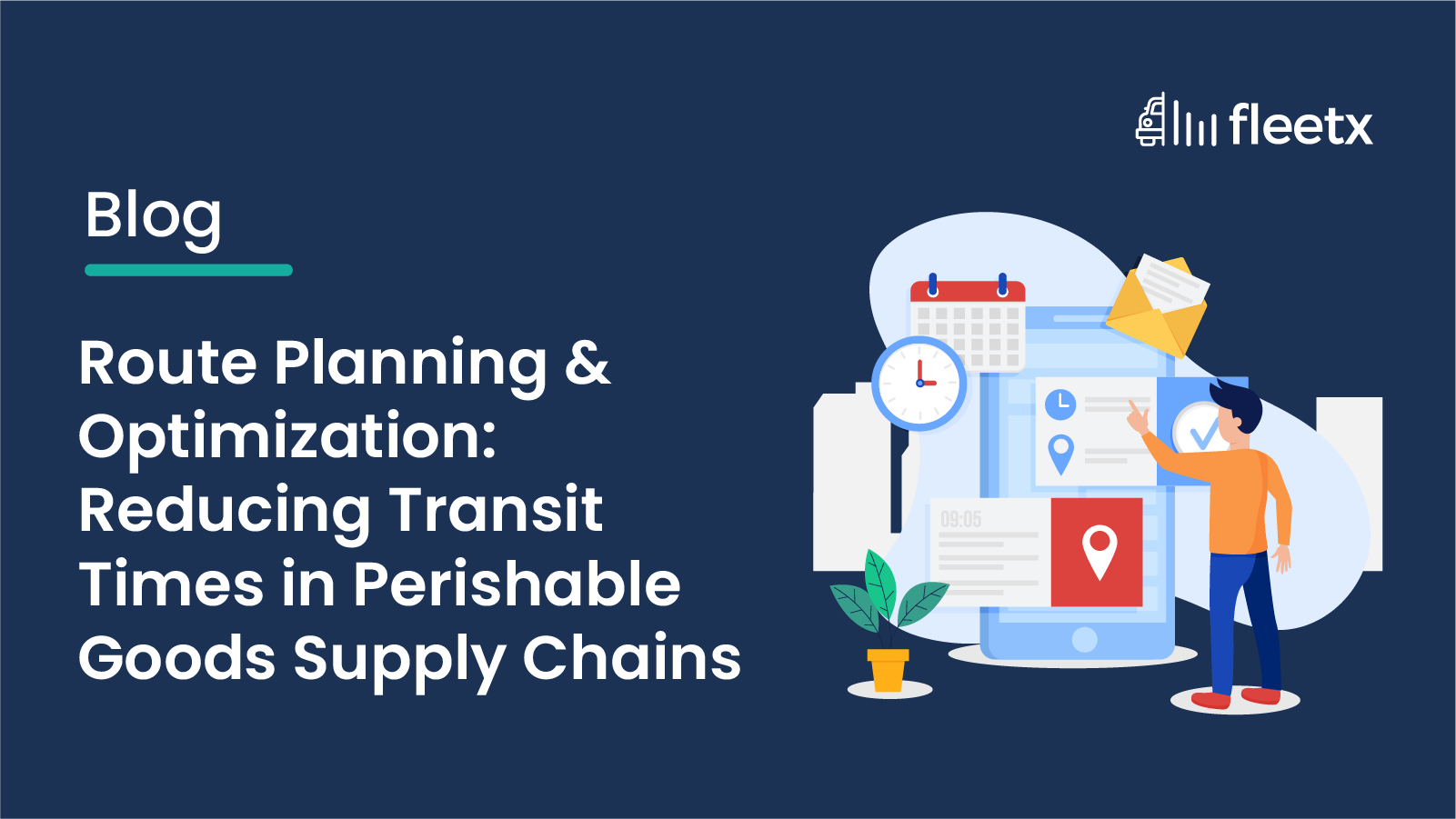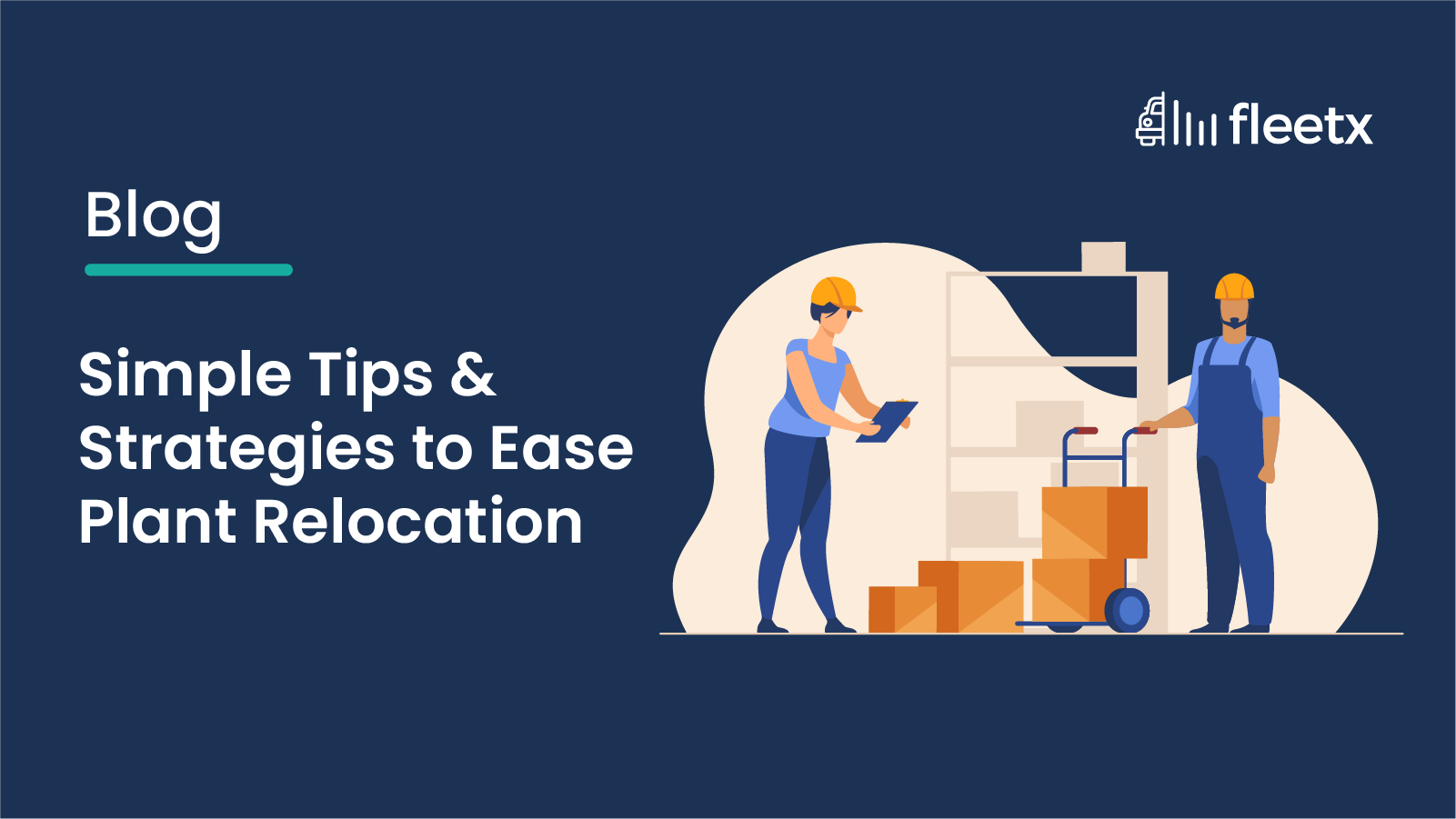
Perishable products like fruits, vegetables, dairy, and seafood need to reach consumers in a fresh and hygienic condition. However, the journey from farm to fork is often filled with delays, spoilage, and inefficiencies. With the growing demand for fresh and high-quality products in the country, businesses are under pressure to minimize transit times and optimize their supply chains.
Route planning and optimization can significantly reduce transit times for perishable goods, as well as cut costs and reduce waste. With the help of advanced technologies like AI and data analytics, companies can transform how they manage transportation. Fleetx is one of the pioneers of this transition, providing innovative solutions that make India's logistics landscape more efficient.
This article explores the challenges of transporting perishable goods efficiently, and how smart route planning can help solve them.
A Race Against Time
Perishable goods require fast and efficient transportation because they are highly sensitive to time and temperature. Unfortunately, the supply chain for these goods in India faces several hurdles:
- Inefficient Routes: Poor route planning often leads to longer transit times, unnecessary detours, and increased fuel consumption
- Traffic Congestion: India’s urban areas suffer from traffic jams, which can delay shipments and increase spoilage rates
- Lack of Real-Time Tracking: Without real-time updates, businesses have limited visibility into the location and condition of their goods
- Inadequate Cold Chain Infrastructure: Poorly maintained refrigeration units, a fragmented network, and frequent power outages compromise the quality of perishable goods
- High Costs: Delays and inefficiencies increase fuel costs, labor expenses, and losses due to spoilage, ultimately impacting profitability
The combined effect of these challenges leads to higher wastage of perishable goods, reduced customer satisfaction, and financial losses for businesses.
Solutions
Modern technology offers several ways to address the challenges of transporting perishable goods. Here are some effective strategies for route planning and optimization:
1. Route Optimization
Route optimization solutions can analyze vast amounts of data - including traffic patterns, road conditions, and delivery schedules - to create the most efficient routes.
For example, Fleetx’s route optimization solution helps businesses to:
- Reduce Transit Times: Identifies the fastest routes, avoiding congested areas and roadblocks
- Minimize Costs: Optimized routes save fuel and reduce vehicle wear and tear
- Improve Delivery Reliability: Ensures that goods reach their destination on time, maintaining freshness
2. Real-Time Vehicle Tracking
Real-time GPS tracking provides businesses with visibility into their fleet’s location and performance. This allows companies to:
- Monitor Shipments: Ensure goods are on schedule and in the right condition
- Respond to Delays: Adjust routes proactively if delays occur
- Enhance Customer Communication: Provide accurate delivery updates to customers, improving satisfaction
Fleetx’s solutions integrate real-time tracking with predictive analytics, helping businesses anticipate and mitigate potential disruptions.
3. Cold Chain Monitoring
Maintaining the right temperature is crucial for perishable goods. Sensors and IoT devices can monitor and record temperature and humidity levels inside delivery vehicles.
Tailored smart solutions can allow businesses to:
- Detect Anomalies: Receive alerts if temperature levels deviate from acceptable ranges
- Ensure Compliance: Meet regulatory requirements for food safety and quality
- Reduce Spoilage: Protect the freshness of goods throughout the journey
4. Dynamic Scheduling
Dynamic scheduling involves real-time adjusting delivery schedules, based on changing conditions. This enables businesses to:
- Reassign Deliveries: Allocate resources efficiently during unexpected delays/disruptions
- Optimize Load Distribution: Ensure vehicles are used to their full capacity without overloading
- Prioritize Urgent Deliveries: Deliver high-priority goods first, minimizing spoilage
5. Data-Driven Decision-Making
By collecting and analyzing data from past deliveries, businesses can identify patterns and areas for improvement.
Predictive analytics tools help companies:
- Reduce Idle Time: Identify and eliminate bottlenecks in the supply chain
- Plan Better Routes: Use historical data to improve future route planning
- Improve Overall Efficiency: Continuously refine processes for better performance
Conclusion
Reducing transit times in perishable goods supply chains is essential to minimize waste, lower costs, and meet customer expectations. By leveraging advanced technologies like AI, real-time tracking, and data analytics, businesses can overcome logistical challenges and optimize their operations.
Fleetx offers cutting-edge solutions tailored to the unique needs of India’s logistics landscape. From AI-powered route optimization to cold chain monitoring, Fleetx’s tools help businesses streamline their supply chains and ensure fresh goods reach consumers quickly, and efficiently.
In an industry where time is of the essence, smart route planning is not just a necessity - it is a game-changer for the perishable goods industry. By embracing these technologies, businesses can stay ahead of the competition while contributing to a more sustainable and efficient logistics ecosystem.






